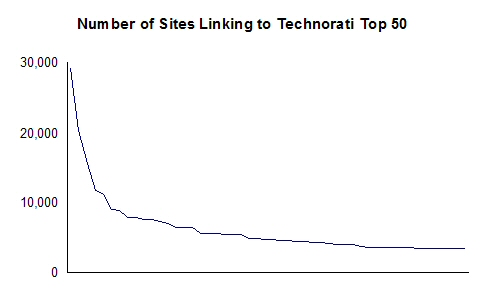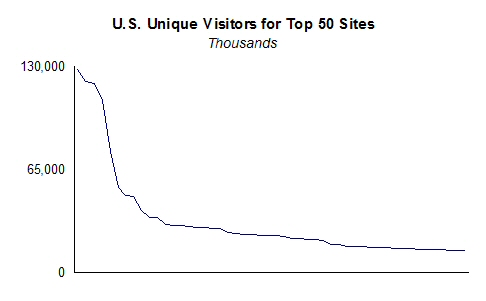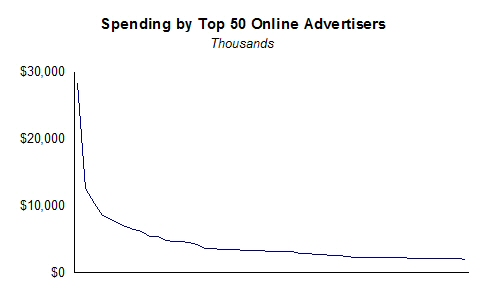The Long Tail of Revenue 2.0
If the “long tail” is the organizing principle of web/media 2.0, why shouldn’t we expect revenue distribution to follow the same pattern, with a handful of companies (i.e. Google, Yahoo) controlling most of the revenue and the remaining online players fighting over the crumbs? When Google found a way to monetize the long tail through AdSense, it became the “head” of a new long tail. We shouldn’t mistake long tail economics to mean that everyone will get a share of the wealth.
I started thinking about the long tail this week after Publishing 2.0 cleared the (completely arbitrary) bar of 500 blogs linking in:

The number of sites linking here seems both large (after only 5 months of blogging) and extremely small, if you consider that Technorati is tracking 41.4 million blogs. But that was still enough for Publishing 2.0 to break into the (also arbitrary) top 2,500 of Technorati.
If you base the math on 41.4 million blogs, Publishing 2.0 is in the top 0.006% of all blogs based on being linked to by only 0.001% of all blogs! That’s some wacky math.
Out of curiosity, I graphed the number of sites linking to the top 50 blogs in the Technorati Top 100, and sure enough, it follows the long tail pattern:

Again out of curiosity (and too much time on my hands), I graphed a few other online rankings — unique visitors to the top 50 US sites and the top 50 online advertisers — sure enough, long tails:

SOURCE: comScore

SOURCE: TNS Media Intelligence
The one ranking list I most wanted to graph was the top 50 sites by revenue, but of course those data aren’t available. Even public companies like News Corp don’t disclose the revenue of large online properties like MySpace (although I wonder whether MySpace would even be in the top 50 by revenue).
But if you could graph the top 50 sites by revenue (including advertising, fees, etc.), I bet you would find another long tail, with Google, Yahoo, etc. at the head.
Long tail economics means that companies can make a lot of money off the tail, but it doesn’t mean that the tail itself can make any money.
This is of course why Web 2.0 long tail companies have only one strategy — get bought by the head. But unless this beast is going to eat its own tail, that strategy will work for a lucky few, and the rest of the tail will toil on in service to the head’s profits (see AdSense).
Web 2.0 has democratize the Web in terms of voice but not in terms of dollars.